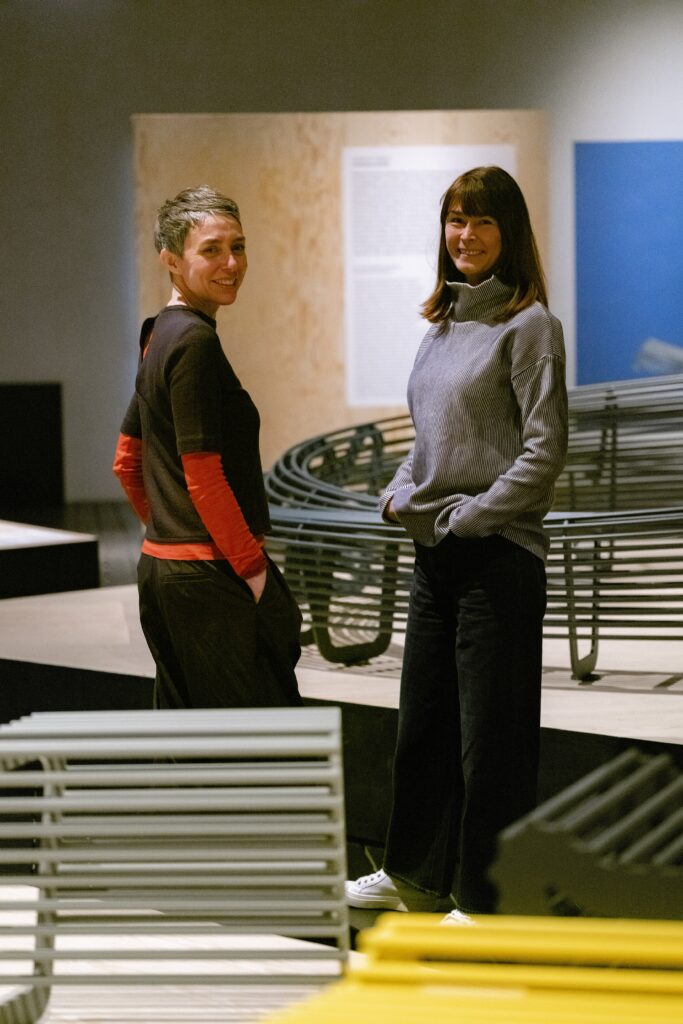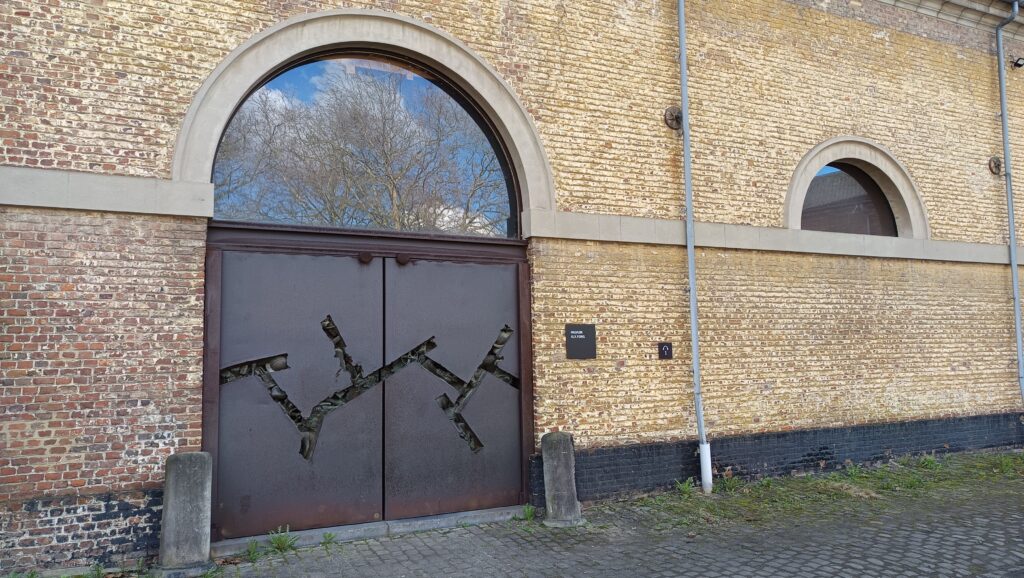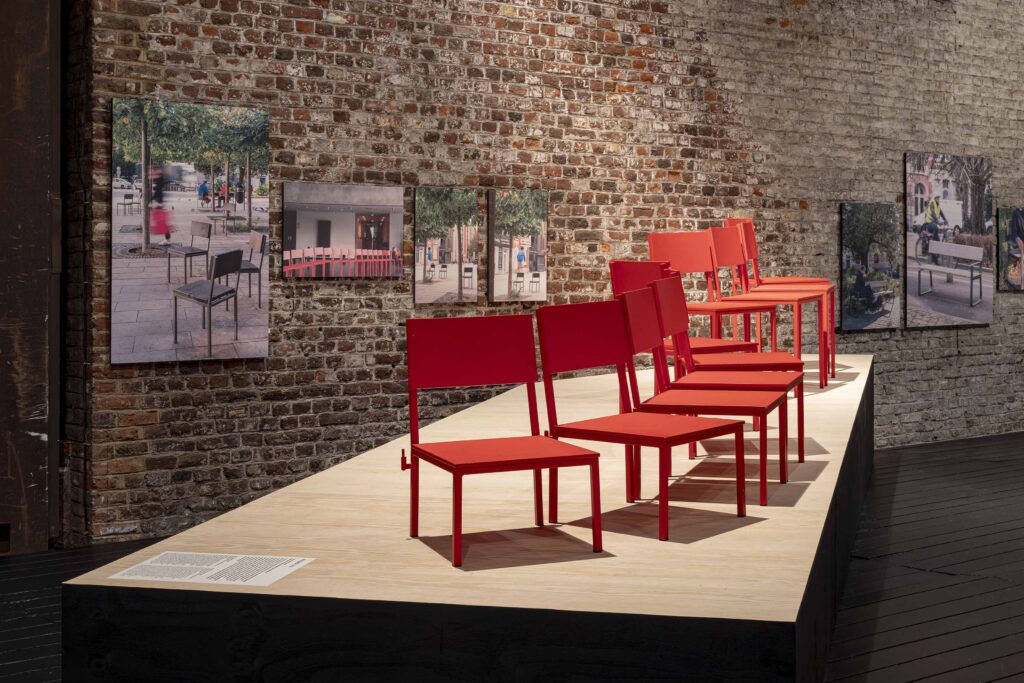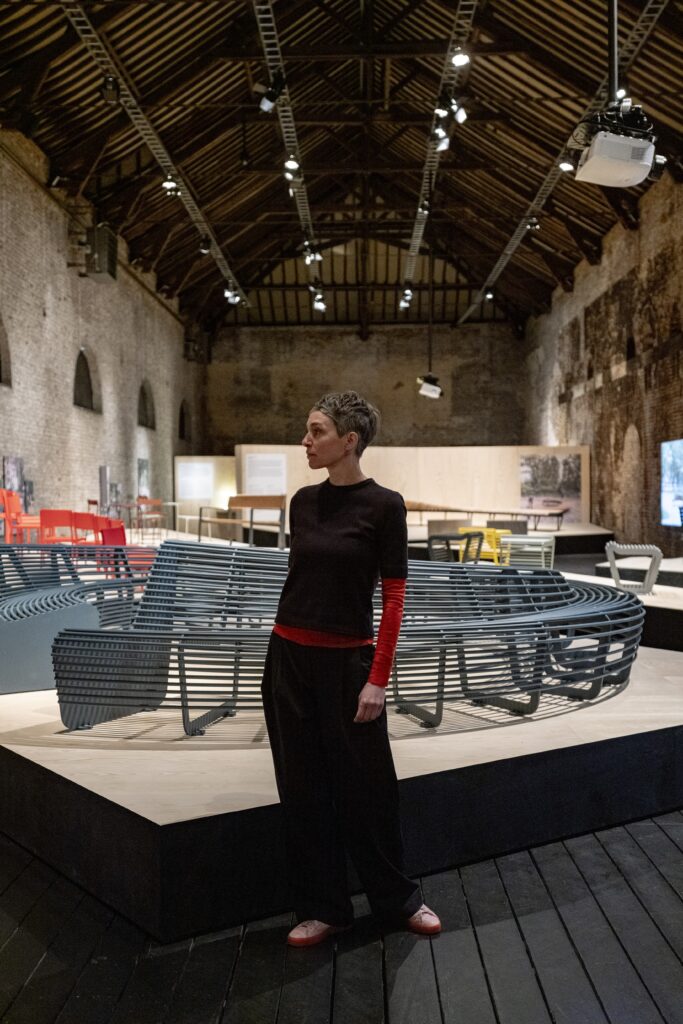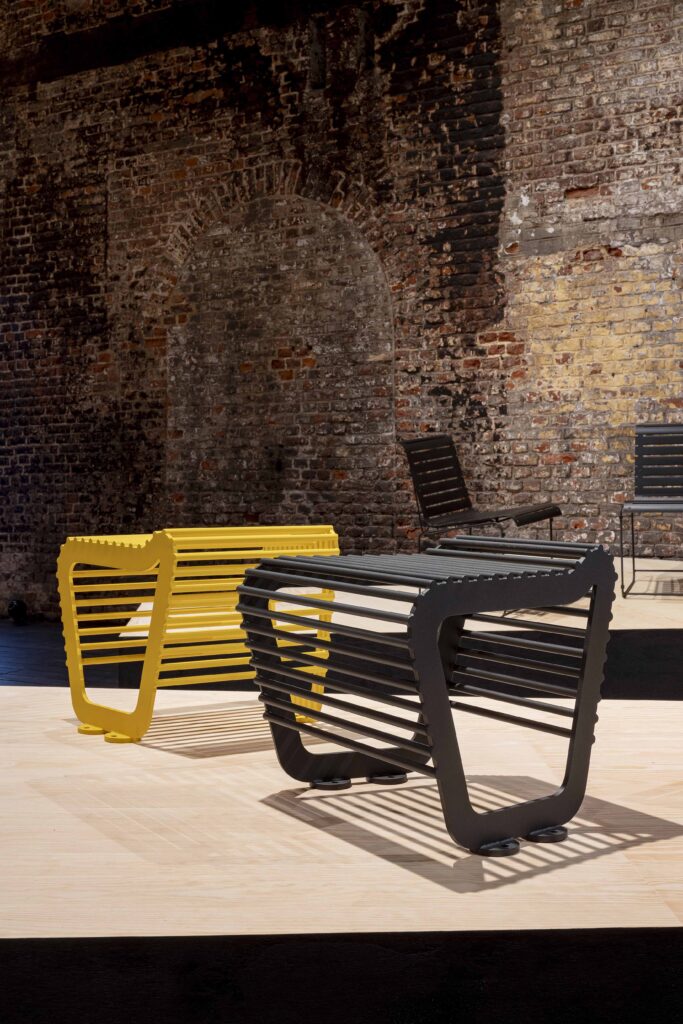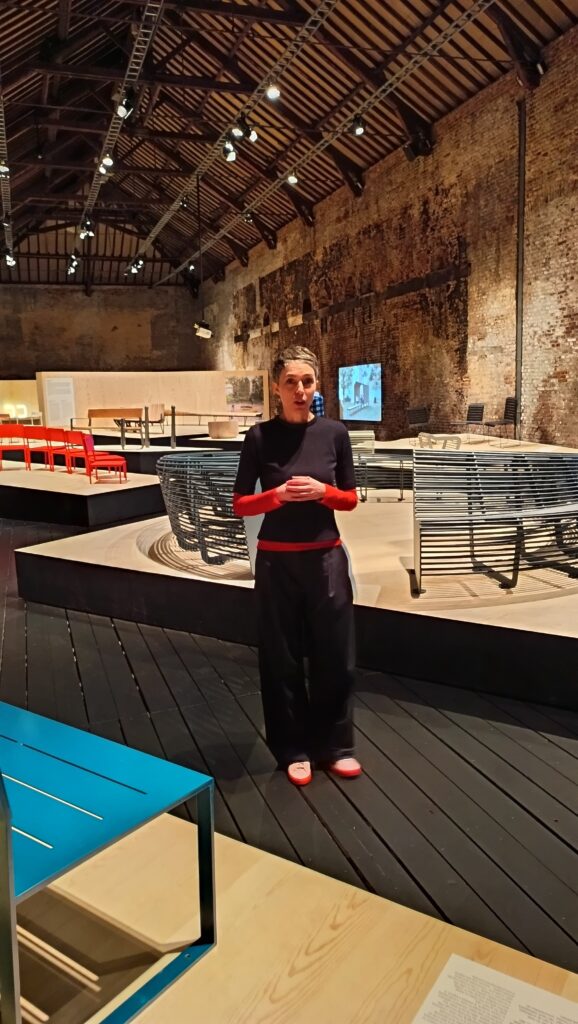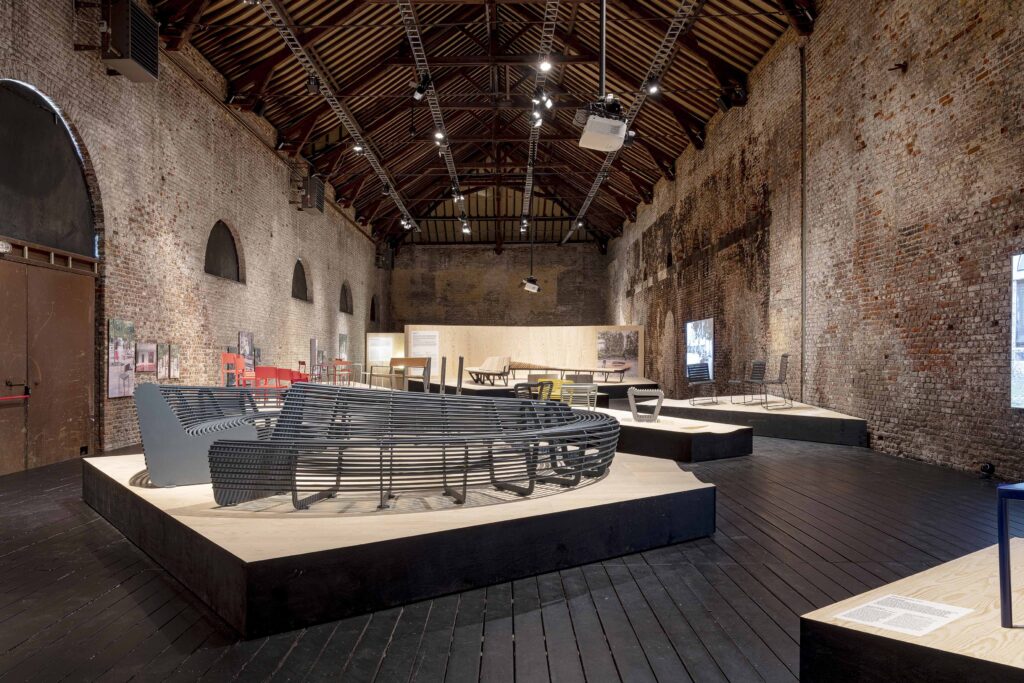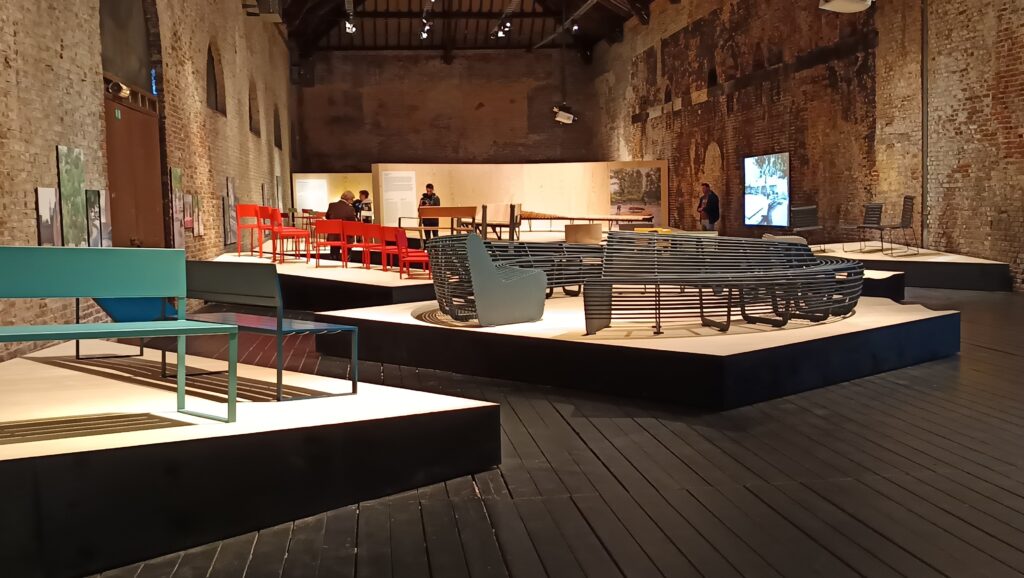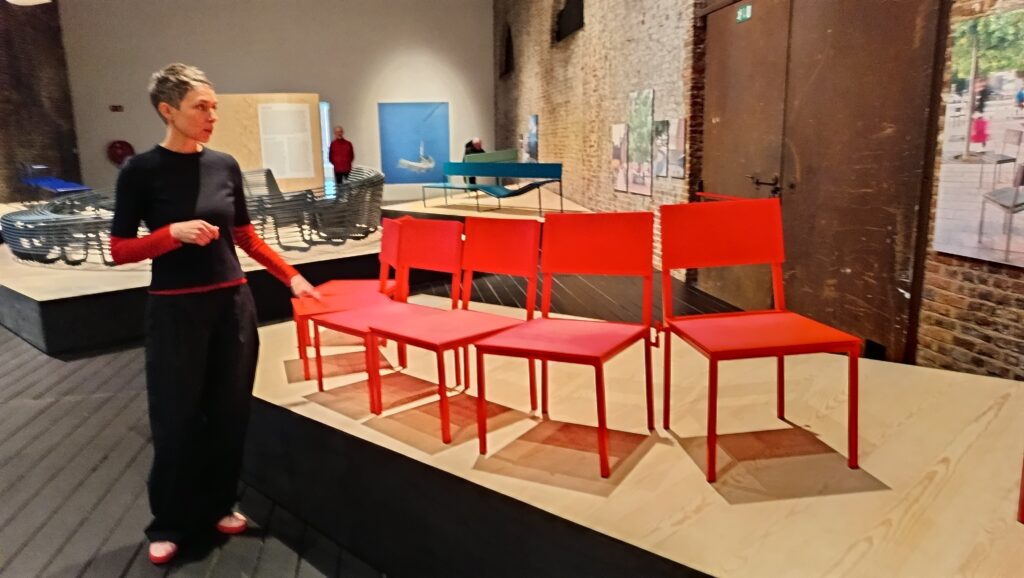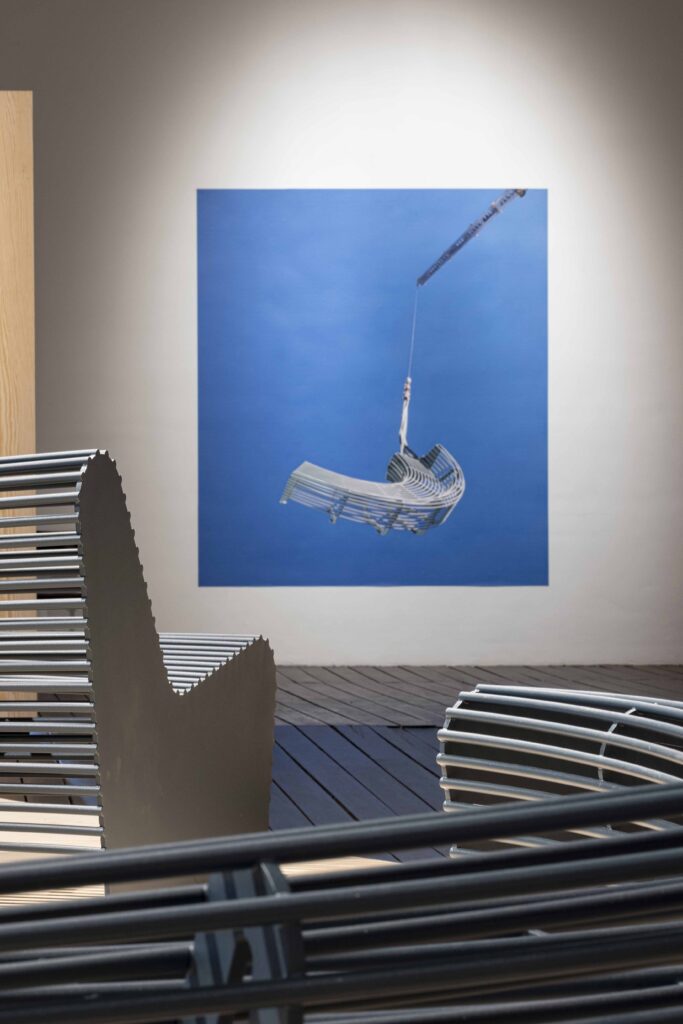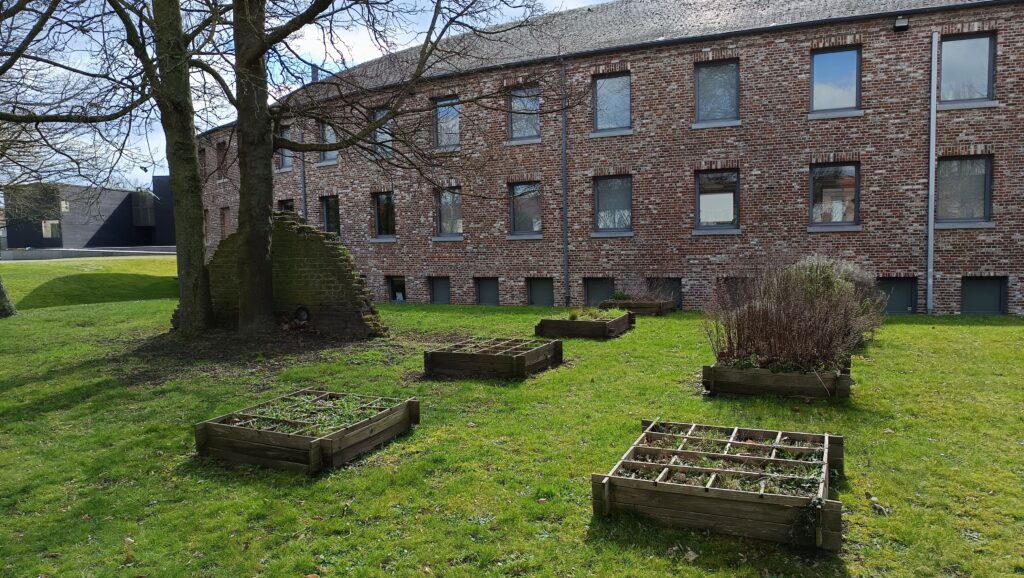CID – Centre d’Innovation et de Design in Grand-Hornu presents the first solo exhibition of Lucile Soufflet, a designer for whom street furniture becomes a way of communication. Her objects are not just objects, but delicate mediators between people, between body and space, between strangers in the city. Benches that hug trees, play structures that echo the architectural arches of Grand-Hornu, mosaics whose colours are born from pixelated photos from the upper floors – all this creates an atmosphere of slight surprise and empathy.
As graceful as an Egyptian statuette, Lucille comes from Charleroi and is a graduate of La Cambre (1996). Her name is well known in the world of urban design. She works with street furniture but turns it into artistic statements. Each of her solutions – a bench, a pergola, or a children’s play structure – is an invitation to sit down, to look, to play, to think.
Her projects do not operate in a vacuum: on the contrary, they are born out of a specific context, responding to its rhythms and peculiarities. This is her approach – sensitive, almost choreographic. It is not without reason that she resembles a ballerina from modern dance. This is particularly subtle in the project for Peterbos in Anderlecht, where the tiles on the open-air walls are ‘assembled’ from a palette taken from a photograph of the view from the window. In this way, the city becomes the material.
But Lucille is not only about the street. The second part of the exhibition takes us to her studio, the place where everything begins. Here, among the shards of ceramics, glass, drawings and samples, forms are born. Sometimes experimental, almost intimate. These objects, devoid of functional purpose, become expressions of delicate plasticity, inner rhythm and attentiveness. Everything here is about hands, about silence, about concentration.
Her connection to the industrial past of her native region can be felt physically. As a young girl, she would climb into the abandoned buildings of Monceau-Fontaine and her imagination would be filled with shapes, glass, wood, steel. These memories are invisibly woven into her language as a designer. Even then, she adored doing everything herself, from sewing clothes to growing vegetables. The desire to be independent has always gone hand in hand with an interest in the world of things.
Today Lucille creates design that speaks. It can be playful, austere, soft, architectural, but always human. And it is particularly pleasing that the objects created for the Grand-Hornu – bright orange arches and blue benches – will remain on the grounds of the Design Centre even after the exhibition is over, as her gifts to the place where she left her mark.
